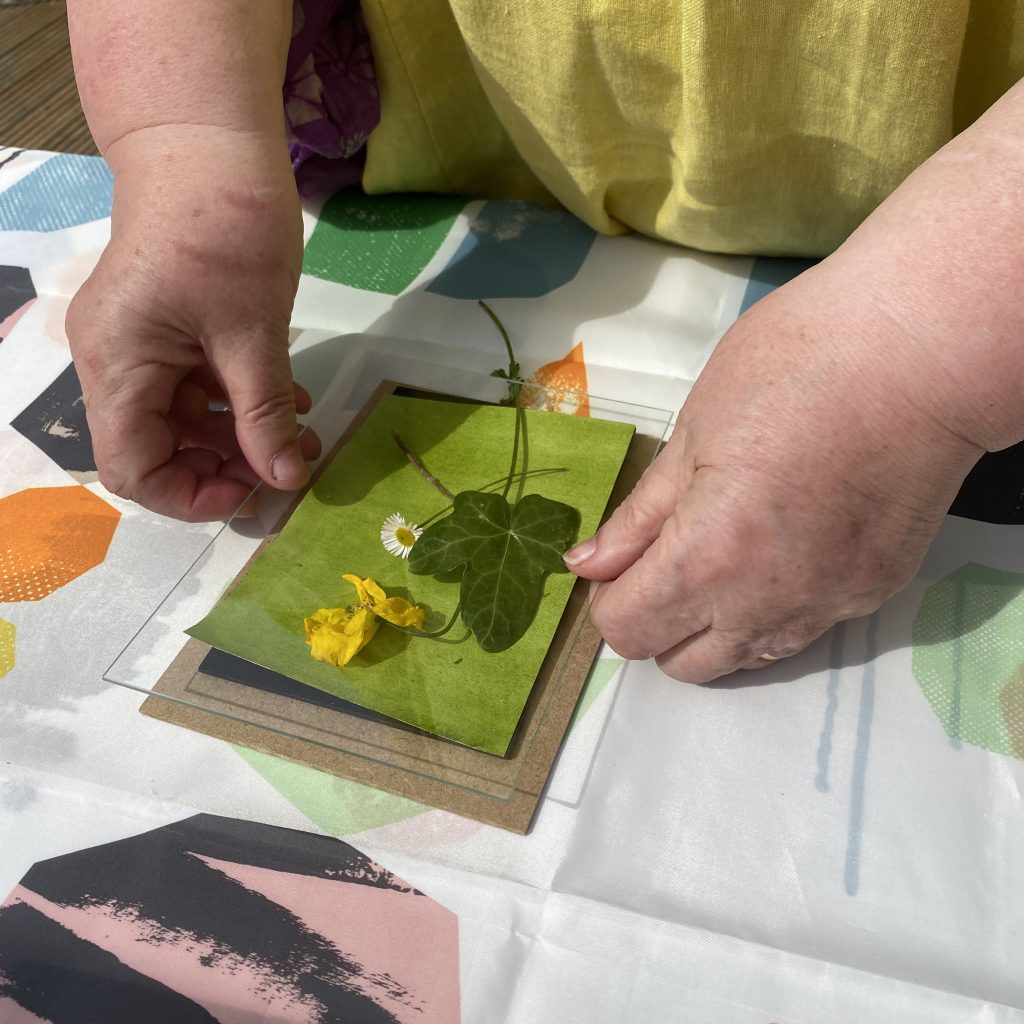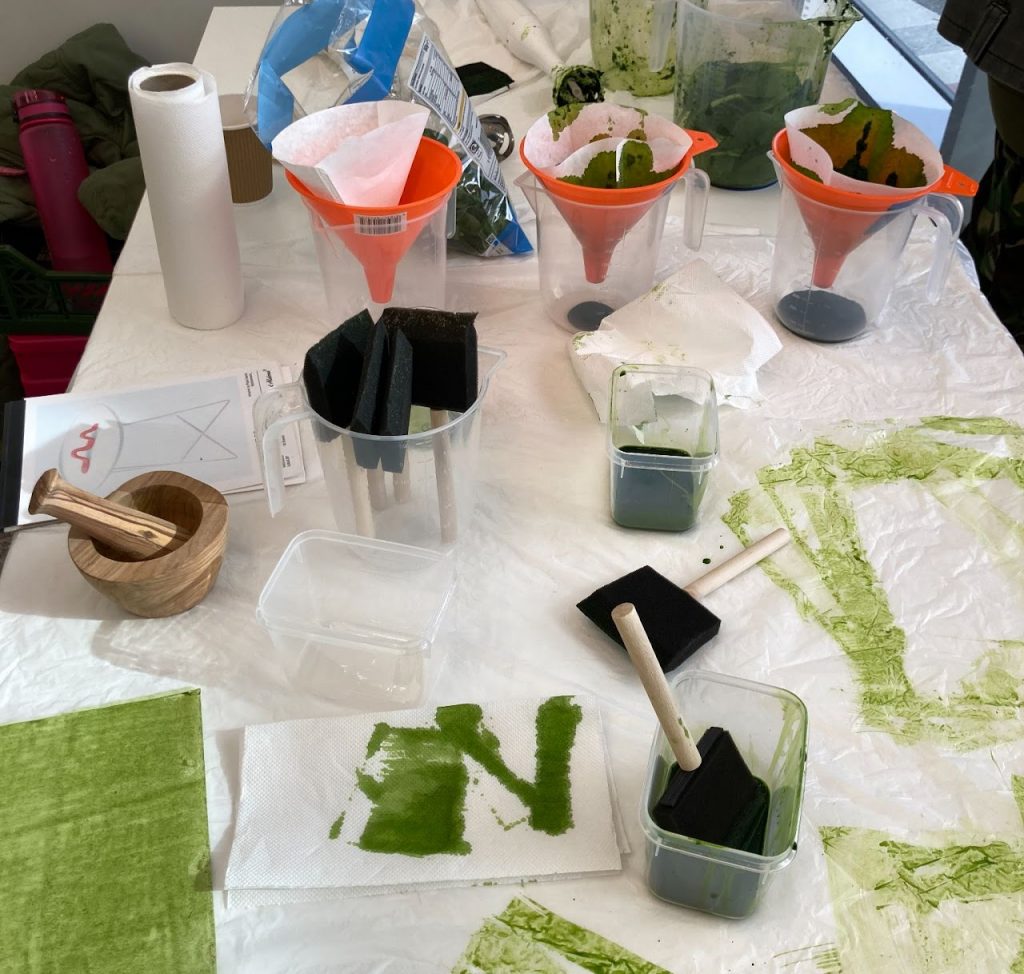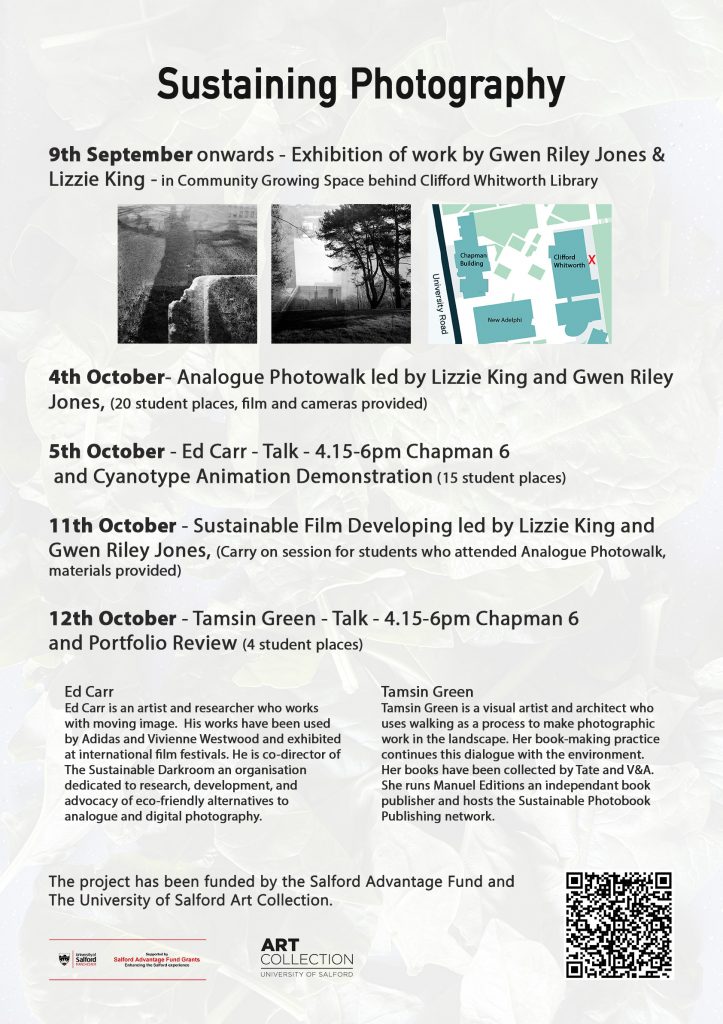Another year of Green Impact success for the Art Collection
Following on from 2021-22 where the Art Collection took home a platinum Green Impact award after participating for the first time in the University-wide Green Impact Scheme, this year for 2022-23 we are delighted to share that we have once again achieved a platinum Green Impact award for our ongoing sustainability efforts.
Green Impact is a United Nations award-winning sustainability engagement programme, run internationally by SOS-UK. Throughout the year, organisations across the globe work on sustainable actions in the Green Impact toolkit, each worth either 5, 10 or 15 points.
By completing actions worth over 500 points throughout the year, the Art Collection team has achieved a second Platinum award. Actions undertaken this year have included completing an energy audit with Marta Strzelecka, University Sustainability Engagement Officer and continuing to reduce single-use plastic and make sustainable swaps where possible across our work; swapping out bubblewrap for re-usable silver stiffy bags as recommended by the Gallery Climate Coalition, and continuing to use ecoboard over foamex and vinyl in our exhibition signage and materials.
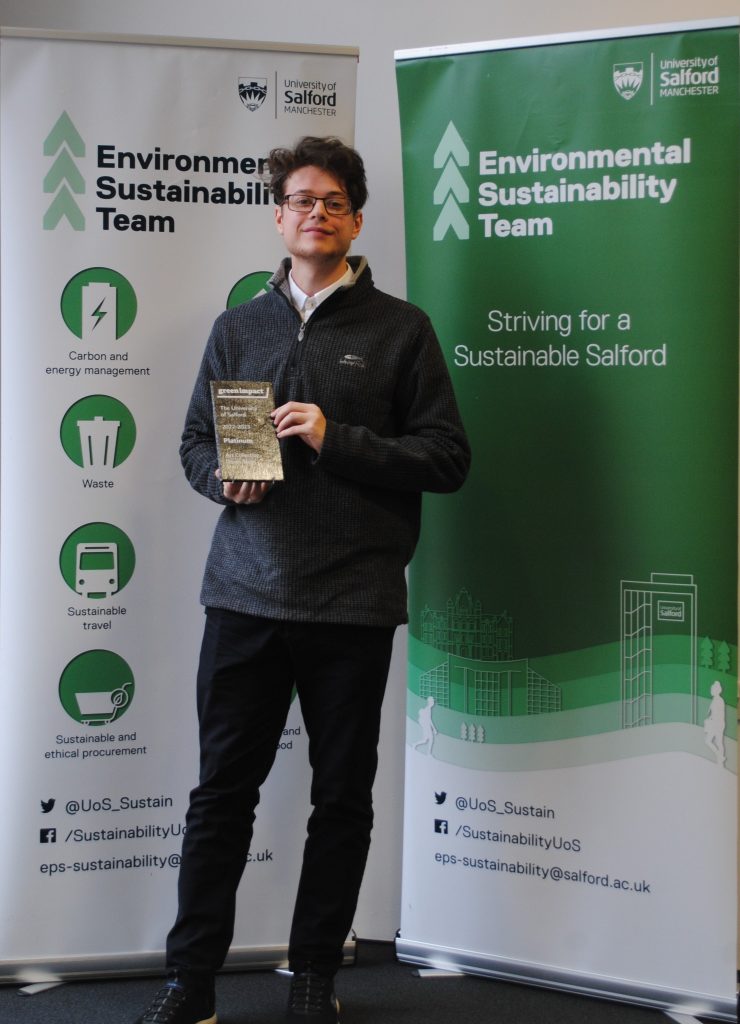
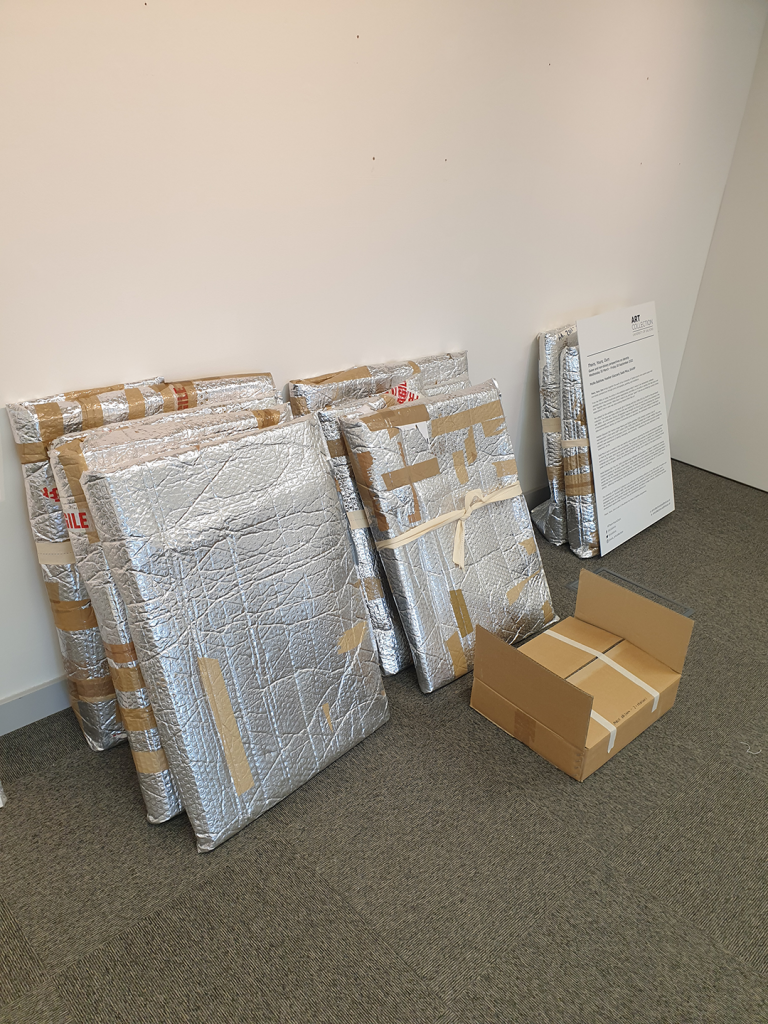
In addition to day-to-day actions, our Green Impact submission this year also included our wider thematic work around sustainability, including the ongoing Energy House artist residencies and the Hybrid Futures programme.
For our Hybrid Futures‘ work, particularly around the Collective Futures collaborative engagement programme, we were awarded the special Community Action Award. Collective Futures brings together individuals, invited by the Hybrid Futures‘ partners for their perspective on the climate crisis. Connecting around Hybrid Futures’ ongoing activity, the collective is collaborating to explore new ideas, possible solutions, and examples of creative work that has made an impact in local and global communities. With each member able to both bring their interests, experiences, and insights and share the group’s work back out to their communities, the collective is already proving a fruitful site of collaboration and sharing.
Additionally, Lizzie King was awarded the Student Leadership Award for her work on Sustaining Photography. MA Contemporary Fine Art student Lizzie has co-developed Sustaining Photography with socially-engaged photographer Gwen Riley Jones as an exhibition and programme of engagement for fellow students and the public, showcasing and promoting plant-based alternatives to traditional toxic photographic methods. If you would like to find out more about Lizzie’s work on Sustaining Photography, click here.
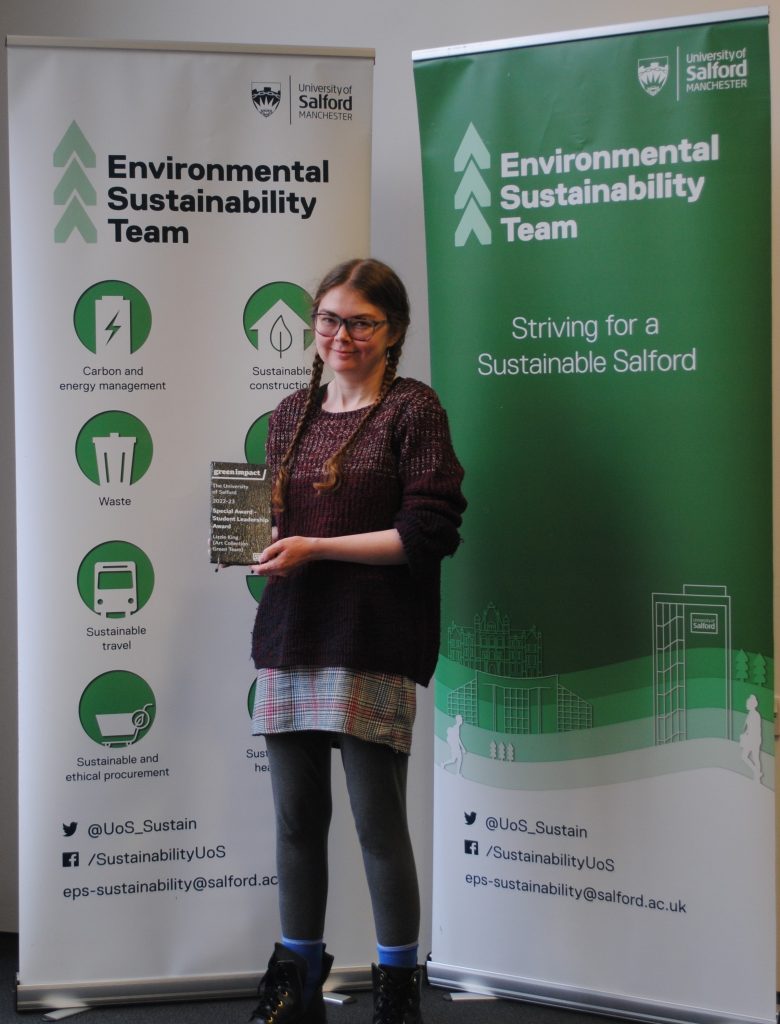
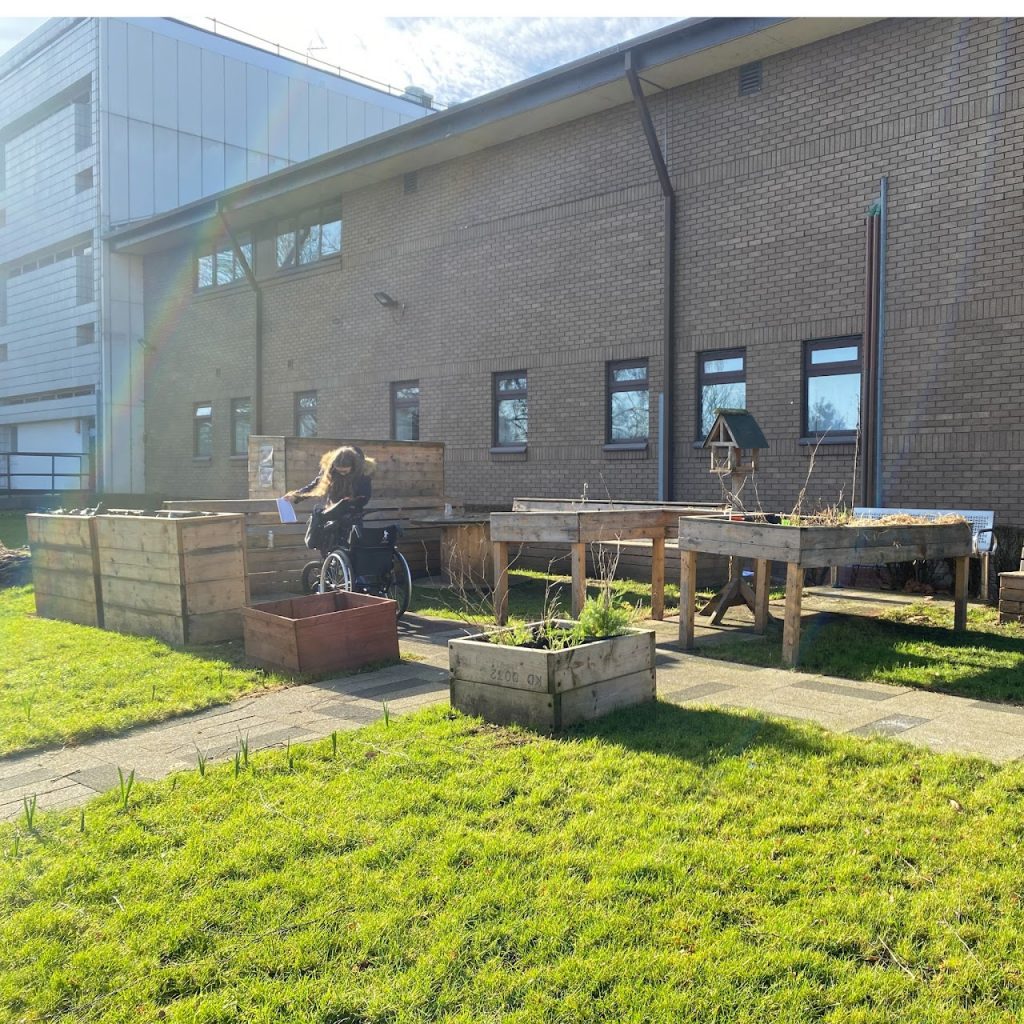
Art Collection Team Sustainability Champion, Rowan Pritchard shares: “Once again we are so pleased to be recognised for our ongoing sustainability work. From day-to-day activity to our overarching thematic focuses, working sustainability has come to underpin everything we try to do at the University of Salford Art Collection. It has been great to take part once again in Green Impact, and to see and celebrate all of the brilliant sustainability work happening across campus.”
Find out about all of the teams who participated in Green Impact across the University PLUS read more about the Green Impact programme on the University’s sustainability blog, here.

